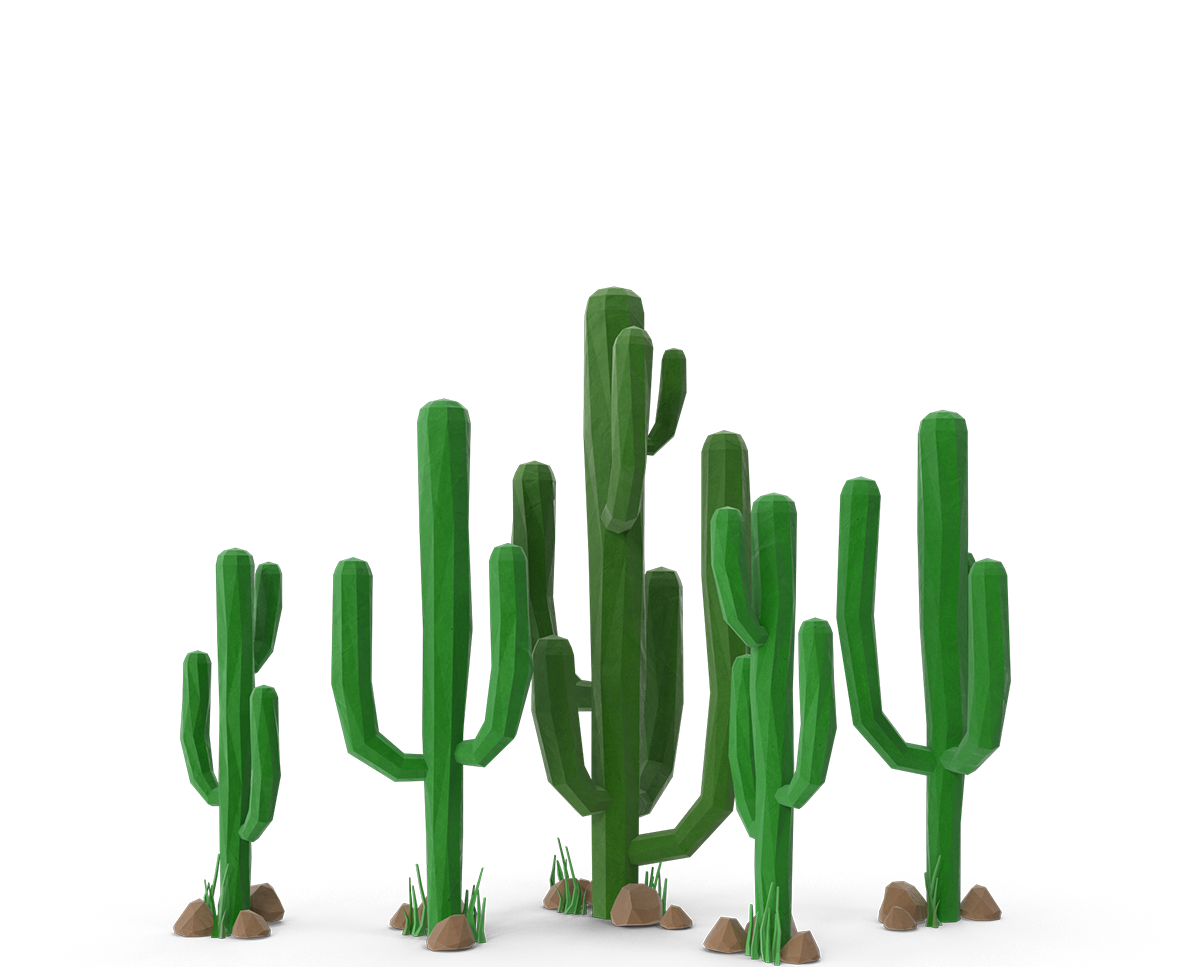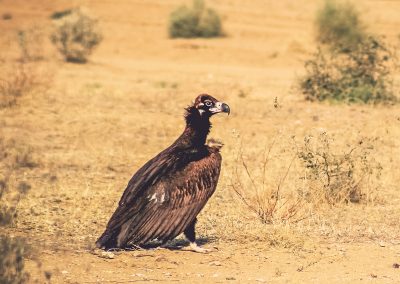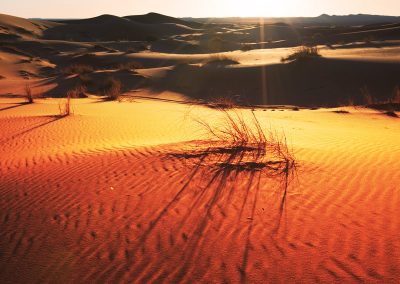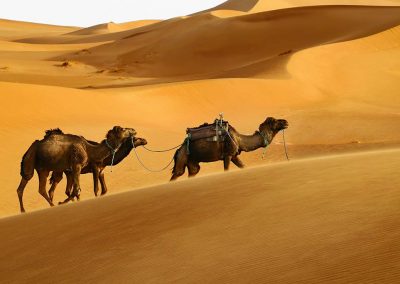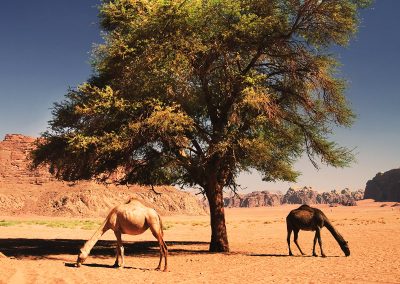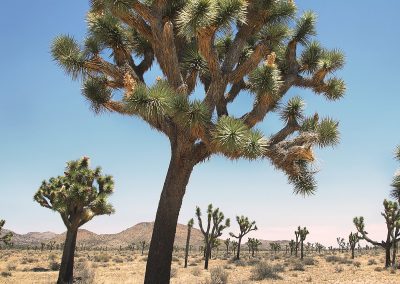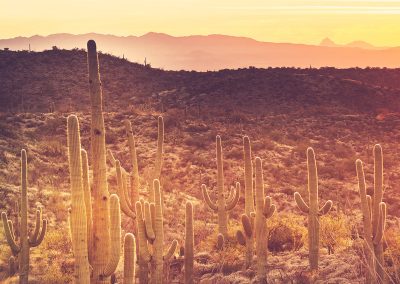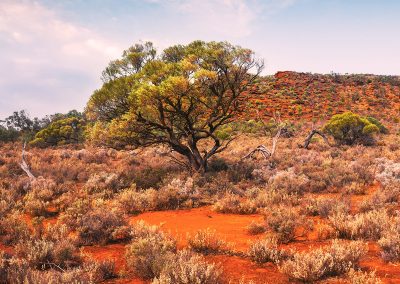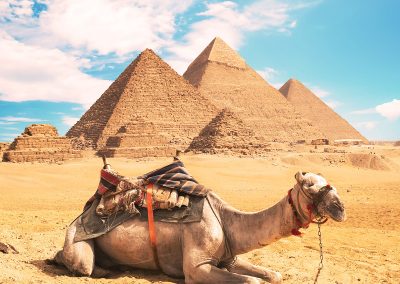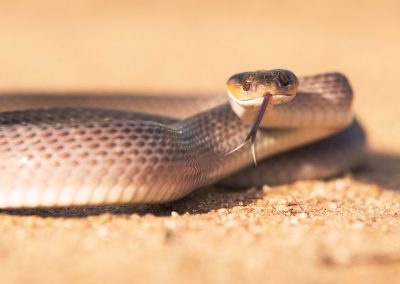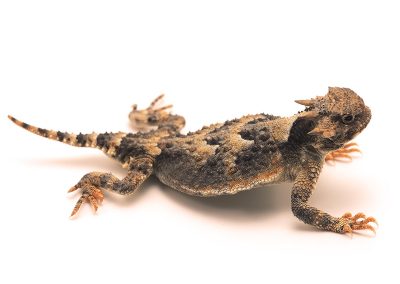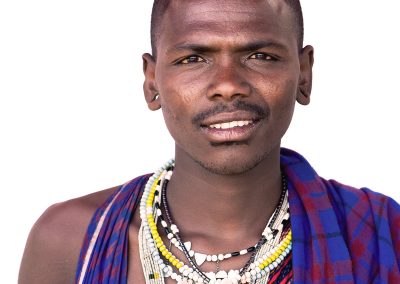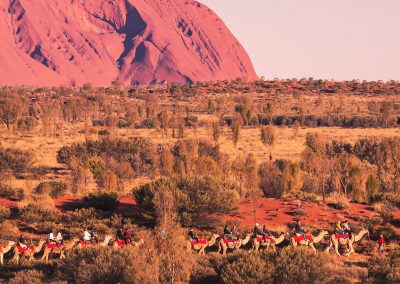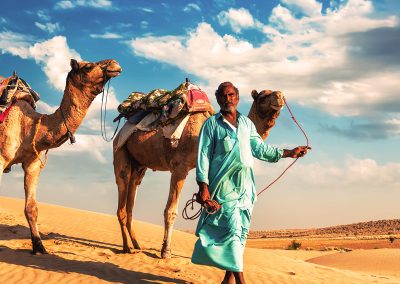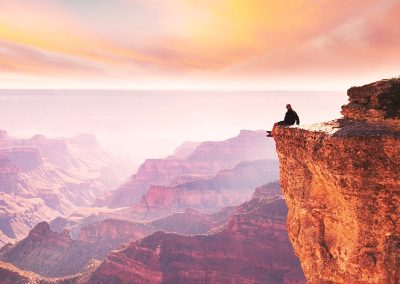Select Page
Desert Biome
A desert is defined simply by the amount of rainfall that falls in an area in conjunction with the amount of evaporation. In essence, it’s any area that receives on average less than 10 inches of rainfall per year, and where the yearly evaporation is more than 10 inches of rain a year.
Deserts are found around the globe, generally around a belt of 30 degrees north and south latitude where global wind patterns carry down dry air from the upper atmosphere.
What do you think of when you think about a desert? I am sure hot and dry are the first things that come to mind, which is surely a defining feature (with the exception of cold deserts, more on this later). Most people also think barren and lifeless, which is less true; deserts actually hold a surprising amount of diversity, and a range of unique plants and animals specially adapted to these harsh desert conditions. Among the seemingly endless stretches of sand and rock, shrubs and cacti survive with minute access to water, while various animals carry out their lives, normally hiding away from the scorching sun and taking advantage of the cool of the night.
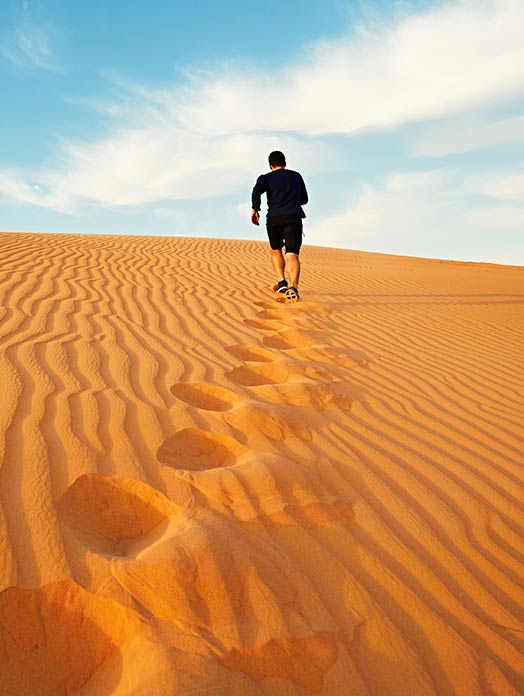
Deserts of the world
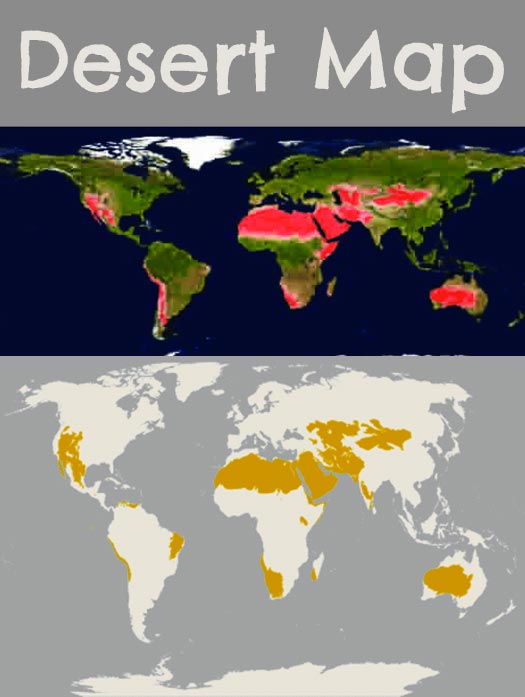
So what defines a desert biome? And what adaptations do desert animals and plants have that allow them to survive here? That’s what we’re going to explore here.
Where are deserts found?
Based on the lines of latitude (the imaginary lines that run east and west on our planet), we can divide the world into three regions: Polar, tropical, and temperate. Polar regions are the most northern and southern (between 66° and 90° lat) , with temperate regions further towards the equator (23° and 66° lat) and tropic regions in the center (between 0° and 23°) surrounding the equator line. It’s useful to view the world in these regions and note that there are deserts in all regions. We’ll get to the reasons why that happens shortly.
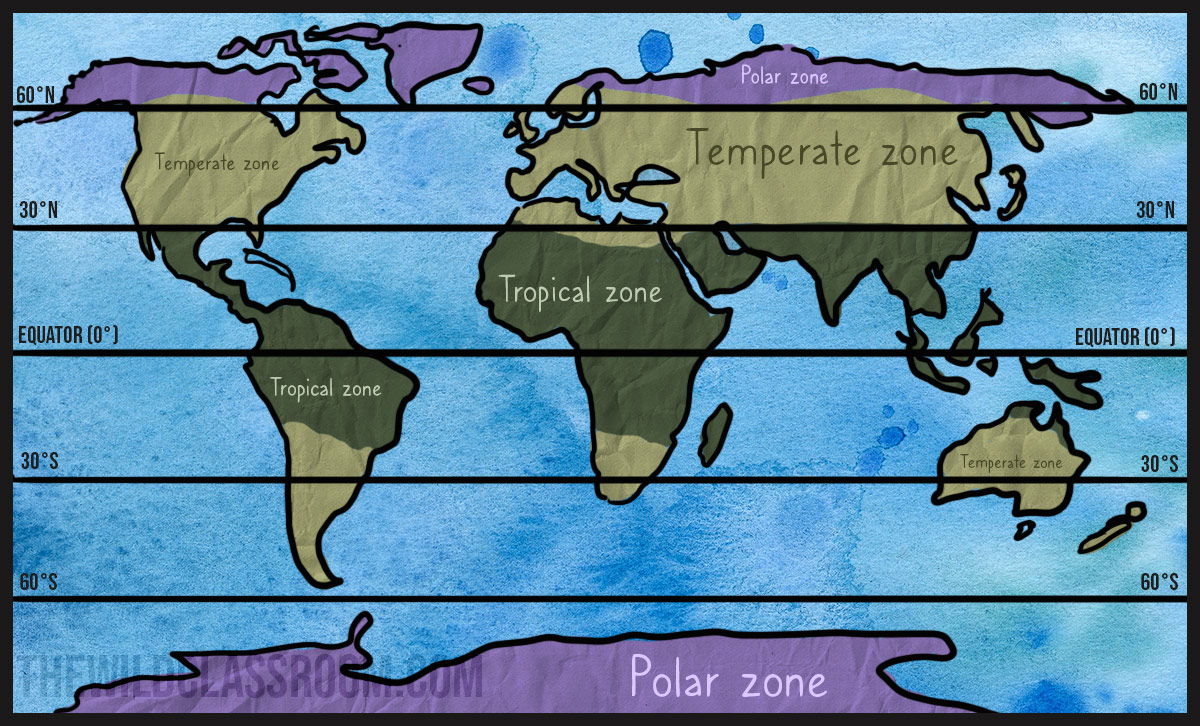
Types of deserts
Here is a quick introduction to the types of deserts:
Hot and Dry / Subtropical / Arid Deserts
The hottest and driest deserts, found along 23.5° North and South latitude (also called the tropic of cancer and the tropic of capricorn) in southern North America, northern Africa, the far southern tip of Africa, and in Australia. An example is The Sahara Desert that spans 11 African countries.
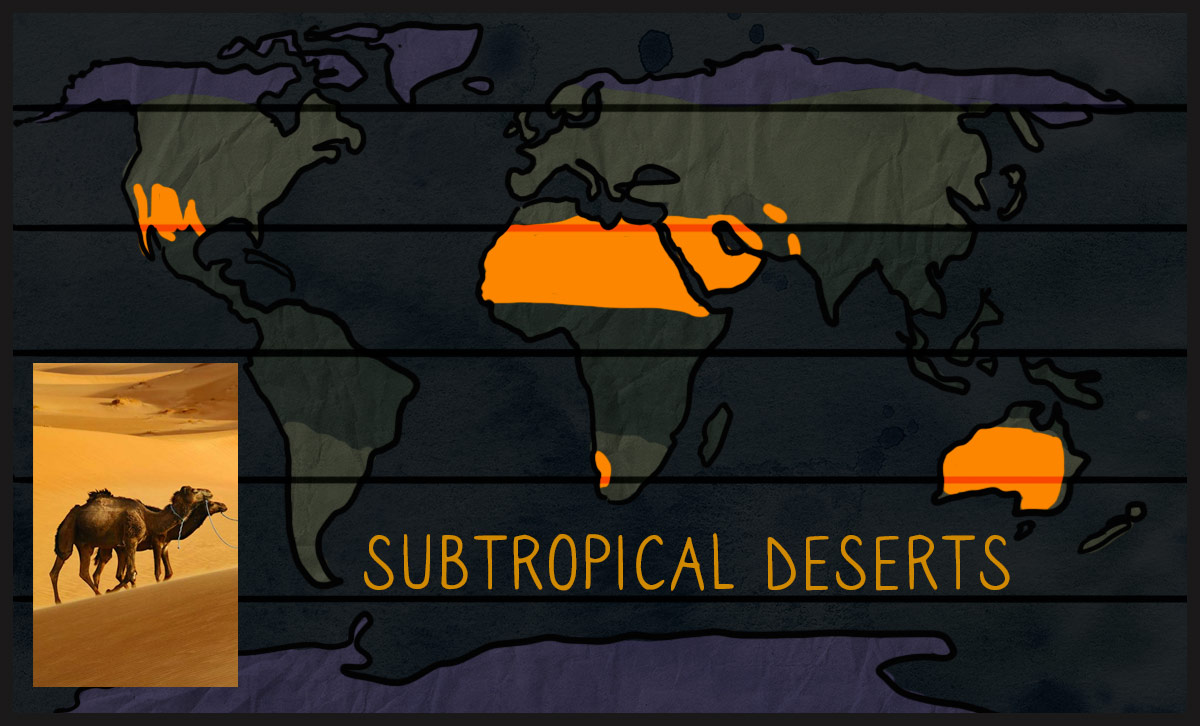
Semiarid Deserts
These deserts are still hot and dry but a bit cooler and receive a bit more precipitation than hot and dry deserts. They are found more dispersed in the world below 23.5° N, normally in regions with tall mountain ranges where there is a rain-shadow effect, which is explained later. An example are the sagebrush deserts in the USA.
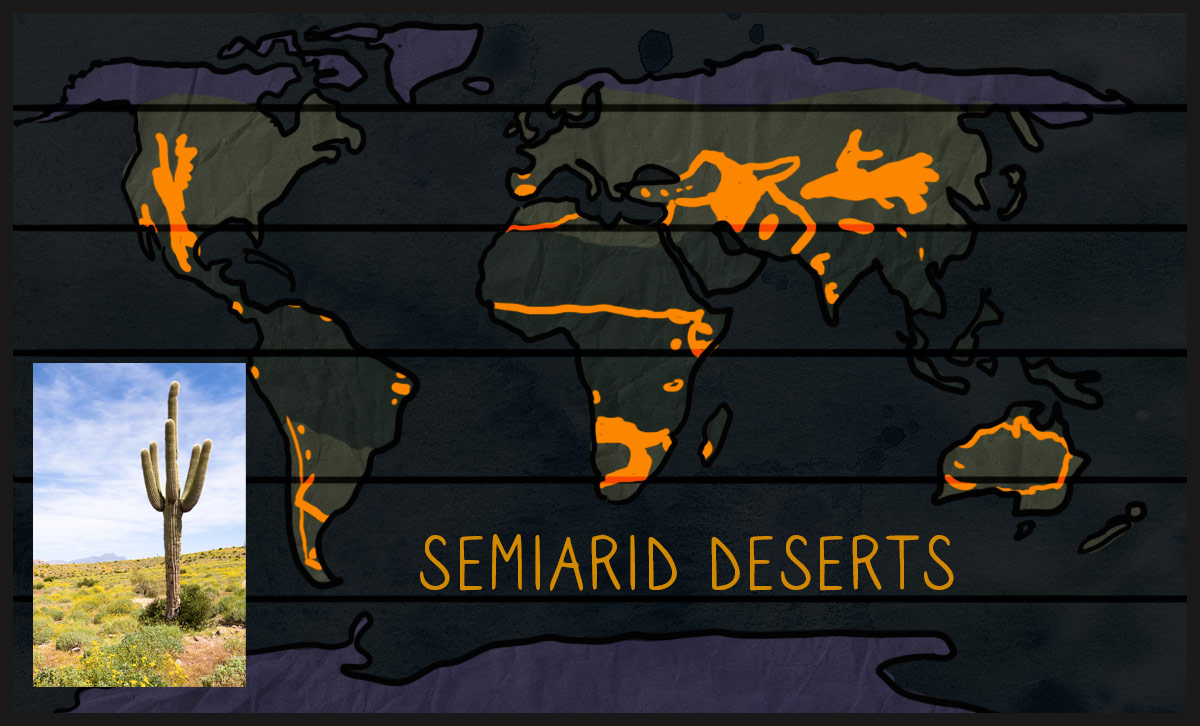
Coastal Deserts
Very dry deserts that are much cooler, especially in winter. They are more humid from being by the water but receive very little rainfall at all. They are found right along the coast, for example The Atacama Desert in Chile.
Your content goes here. Edit or remove this text inline or in the module Content settings. You can also style every aspect of this content in the module Design settings and even apply custom CSS to this text in the module Advanced settings.
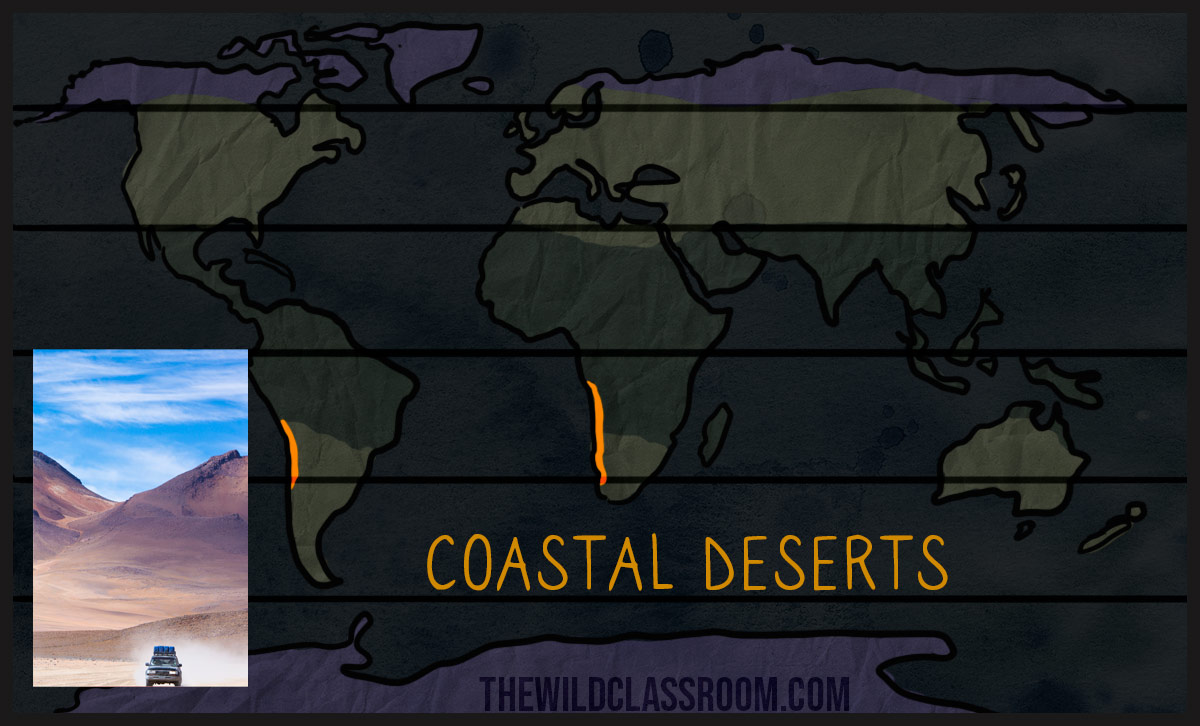
Polar / Cold
This term may seem confusing but the regions in the Arctic and Antarctic are also considered “cold deserts” or “polar deserts” which we will speak about briefly here – but also see the Ice Cap Biome. They are also defined by low precipitation (150-260 mm or 6-10 inches) and low plant biomass (the mass/amount of plants in an area) but are much colder.
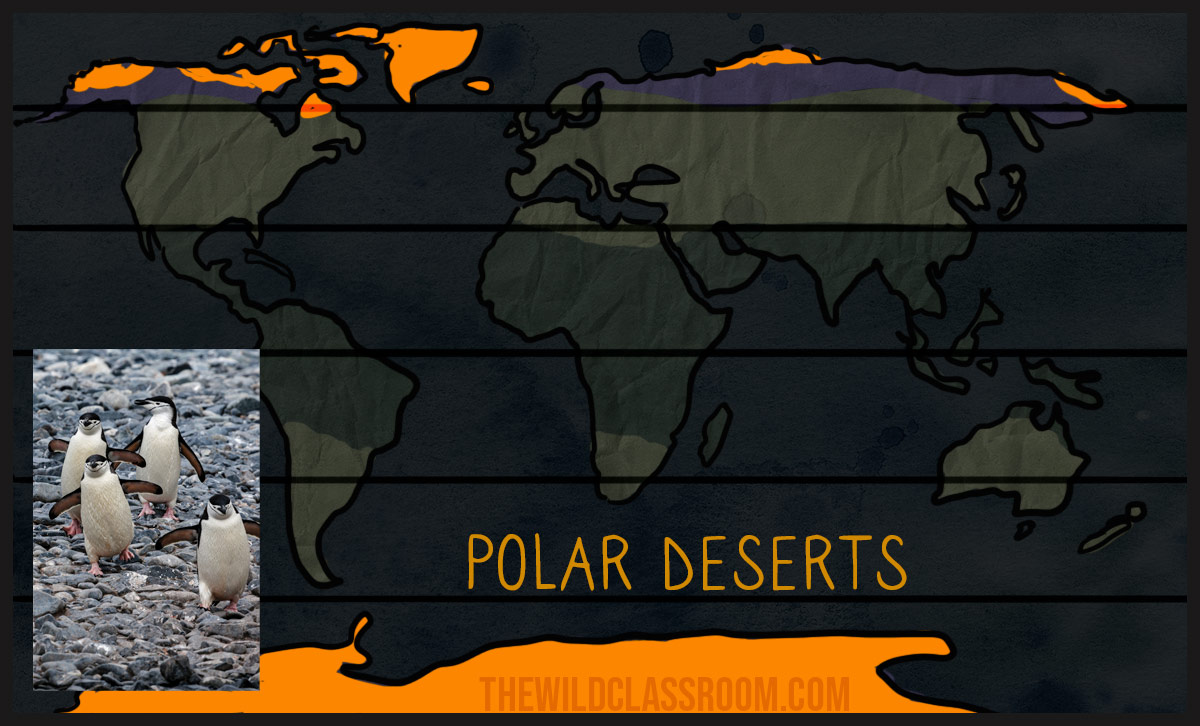
Desert Biome Overview Video
Learn more about the desert biome with a short overview video here.
What defines a desert?
There are some differences between the different desert types but certain characteristics remain the same, allowing us to lump these 4 desert types into one biome.
When defining a biome, we are primarily interested in the abiotic factors, which are the nonliving characteristics such as precipitation (rain and snowfall). Vegetation is also important in the definition, and a desert is normally a place that has very little vegetation, mostly cacti and shrubs and very few trees. Aside from this, what abiotic factors define a desert?
Precipitation
A desert biome is generally characterized by low precipitation. Most deserts receive less than 254 mm (10 inches) of rain per year, which is less than the length of a standard ruler! As well, the yearly evaporation is greater than the amount of rain that falls. Some deserts can reach a maximum of 508 mm (20 inches) of rain per year, but these are sometimes referred to as semi-deserts as most true deserts are much drier than this. Such low precipitation makes it a difficult place to live, because every living thing needs water to survive. So, anything that lives here has to have special adaptations to survive the extreme lack of water.
As well, most deserts receive rain in short bursts, with either a lot of rain in a certain month or some rain every few weeks. In some deserts it does not rain for years at a time. The Atacama desert in Chile, considered the driest desert on Earth, has a record of 14 years without any rainfall and some weather stations there have yet to record a drop of rain.
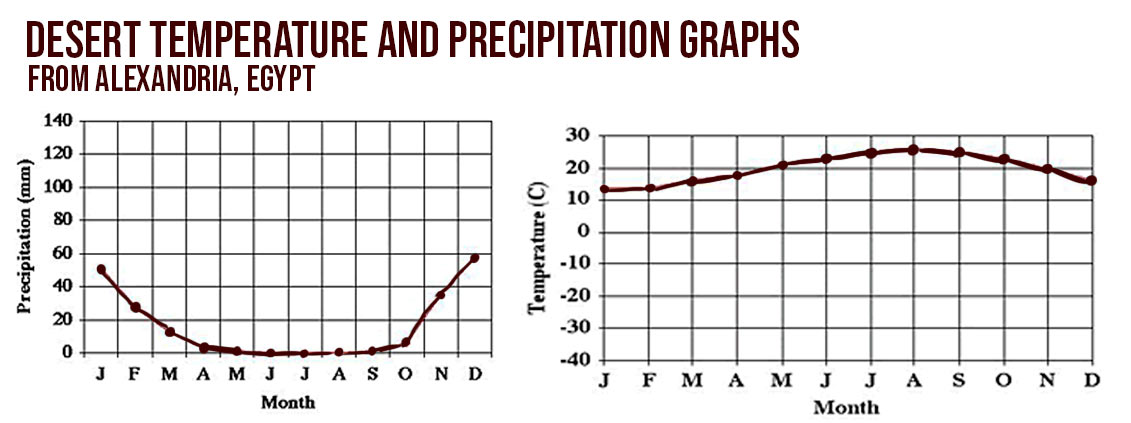
Soils
Soils tend to be coarse and sandy with good drainage, which further decreases water availability near the surface. Lack of vegetation also means there is little to break the wind, which moves away finer sand and dirt, leaving the coarser and heavier material behind. Low chemical weathering of the sand and rock (breakdown of rock mainly from water and other substances in the water) stops deserts from forming soil horizons that are present in many ecosystems. Desert soils tend to be low to moderate in salt content, but surprisingly they can be quite fertile. If it weren’t for the lack of rain, many deserts could be quite productive. This can be seen when deserts that rarely receive rain have a downpour and the plants begin flowering and bursting to life. The seeds of these plants remain dormant (a sleep-like state where an organism waits for the right time to hatch or grow) for long periods of time waiting for a rain like this to occur.
Sunlight hours
Since there is low cloud cover, deserts receive a lot of sun and high amounts of radiation. Deserts in lower and higher altitudes do have some seasonality and receive lower amounts of light in the winter, while cold deserts face the extremes of having nearly constant light in the peak of summer and months of darkness in the winter.
Temperature
Temperature ranges vary a lot between the different desert types but a fairly common characteristic is the drastic change between day and night temperatures. During the day most deserts are quite hot but cool off drastically at night. The main reason for this is that the lack of moisture in the air and lack of clouds allows for high radiation during the day, causing it to become very hot, and means that that heat is not trapped at all during the night. This drastic difference is another obstacle to desert survival but also allows many organisms a chance to be active at night when it is much cooler.
Typical deserts have mean annual temperatures of 20-25 °C (68-77 ˚F). In hot and dry deserts highs reach around 44-50 °C (111-122 ˚F) and the soil surface becomes even hotter and can reach greater than 70 °C (158 ˚F)! Semiarid deserts do not tend to get higher than 38°C (100 ˚F) and drop to around 10°C (50 ˚F) at night. Coastal deserts are cooler with more seasonality, with highs of 35°C (95 ˚F) in summer and lows below freezing (0-4°C or 32-39 ˚F) in the winter. Cold deserts experience extreme seasonality, with summer averages of 21-26 °C (70-79 ˚F) and winter averages from -2 to 4°C (28-39 ˚F), with lows down to 80°C (-112˚F)!
What causes desert conditions?
Deserts are formed by a few different things that cause low rainfall:
Rain-shadow effect
When warm moisture filled clouds approach a mountain, they are forced upwards. As they go higher in the atmosphere they begin to cool, releasing the rain onto the windward side of the mountain. When the clouds reach the leeward side (away from the wind) of the mountain, they have very little moisture and the air is cold. The cool air drops down the other side of the mountain and begins to warm. As air warms it absorbs moisture around it and carries it away. Therefore, mountain ranges with prevailing winds from one direction experience this rain-shadow effect, leaving one side of the mountain lush and the other side a desert. This is a common cause of semiarid deserts.
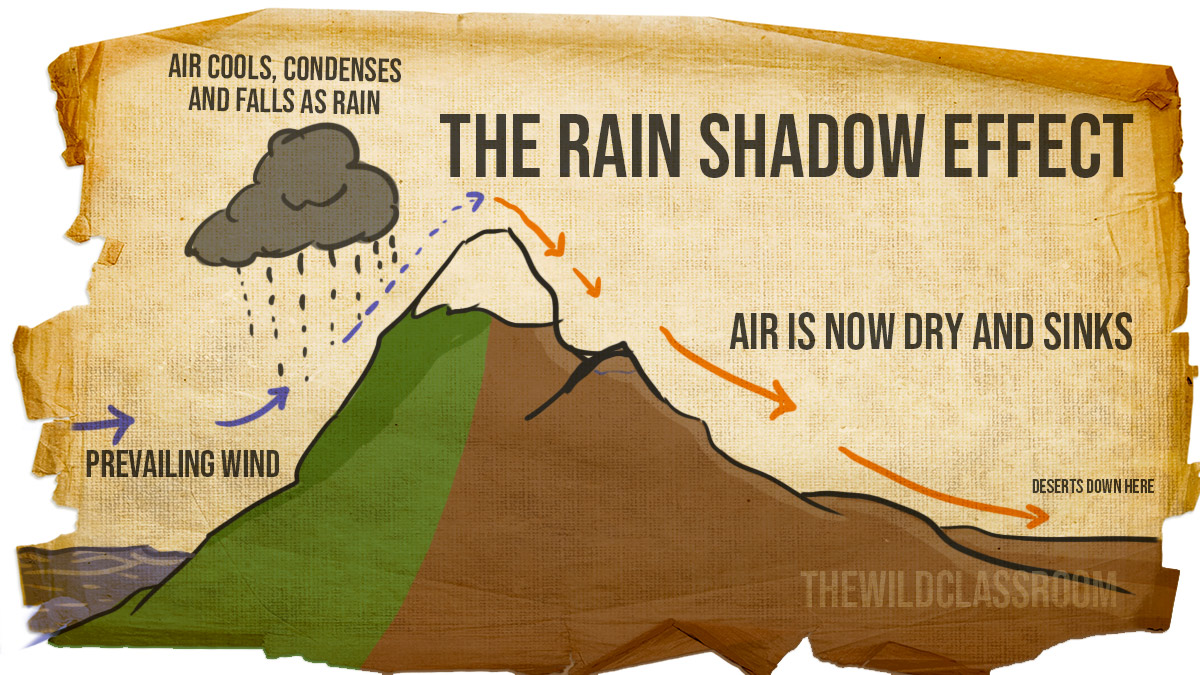
Hadley Cells
As hot air rises from the tropics at the equator, it pushes cold air away, as this cold air settles, further north and south, it begins to warm. The warm air then begins to absorb any moisture in the area and makes dry areas even dryer, which helps to form deserts below. The hot air circles back around to the tropics and cold air continues to be pushed away continuing the cycle. These circulations of hot and cold air are called Hadley Cells (here is a good explanatory video from MinuteEarth.
Interior basins
Sometimes a desert is formed because it is so far from any type of moisture that wind currents rarely carry any rain there, such as the Gobi desert in China and Mongolia. By the time wind currents reach this area from the coast, they have virtually no moisture left in them, causing little to no rain in these regions.
Cold coastal water and warm land
Currents carry the lowering dry air towards the shore but it is cooled quickly by contact with the cold water, which causes fog but does not produce conditions for rain. Additionally, this land tends to be warm, which results in fast evaporation of any of this moisture. These factors combined result in some humidity but little to no rain in coastal deserts such as the Namib Desert, that stretches along the West Coasts of Angola, Namibia, and South Africa.
Biodiversity in the desert
The desert is a very harsh environment full of extremes that are difficult to survive. So what adaptations do plants and animals have to survive in a desert? We are going to discuss plant and animal life adapted to hotter and dryer deserts. For cold deserts see The Ice Cap Biome.
Plant adaptations to the desert
The extreme heat, drastic changes in daily temperature, and the lack of water make deserts a difficult biome for plants to live in. So what adaptations do plants have to live in a desert?
The main limitation to plant growth is the lack of water and the high amount of evaporation. This means that the most important adaptations are how to (1) get as much water as possible from the little available and (2) hold onto the water that you have absorbed.
How do plants get water in the desert? There are a few different strategies for this. For example many plants including cacti, like the Saguaro Cactus (Carnegiea gigantea) of North American deserts, have long and shallow root systems to be able to have access to a larger surface area and trap water from the upper levels of the ground when rain does fall. An even more interesting strategy is that of the Tortola moss (Syntrichia caninervis), which is a common desert moss. This moss has evolved the ability to pull water straight from the moisture in the air, meaning that it doesn’t need rain at all to obtain water!
Along with fighting to find water, plants also have to protect against high transpiration rates, the rate of evaporation of water right out of leaves during photosynthesis, that occurs more rapidly in higher heat. Again, different plants have different ways to deal with this. First, plants that do have common-looking leaves have very thick cuticles, the thick waxy covering on leaves, to help keep water trapped. Other plants, like cacti, have extremely reduced leaves – their spines – and only photosynthesize with their stalks to avoid lots of area where water can escape. These spines also protect them from animals that try to eat the cactus in order to get water by eating the plant itself.
Another way to avoid high transpiration due to hot temperatures is to have a totally different way to fix carbon (which is usually done via photosynthesis). Some plants that live in dry environments are able to separate the steps of photosynthesis to avoid water loss during the hot days. These plants, such as pineapple, agave, cacti, certain mosses (…and more!) are called CAM plants, and they are able to open their stomata, the holes in their leaves, at night to allow in carbon dioxide while avoiding lots of lost water in the daytime heat. Then, in the day they are able to complete the calvin cycle in the sunlight without having to open their stomata and lose large amounts of water. See Khan Academy here for an explanation of the different types of carbon fixation in plants.
For some plants in the desert, their strategy is just to wait for better conditions. Many plant’s seeds are able to stay dormant in the ground waiting for the rare rains or seasonal rains. Once a large rain occurs the seeds grow, flower, and reproduce in a short time, taking advantage of the narrow window of moisture. Then their seeds continue the cycle, waiting in the ground for the next downpour, whether it be seasonal or random. An example of a plant that does this seasonally is the Globe Thistle (Echinops gmelini) that exists in deserts in Asia.
Animal adaptations to the desert
Like plants, animals also have to have specialized adaptations to live in the desert. However, since animals are able to move around and make decisions as well, many of them rely on behavioral adaptations too. So what are some physical and behavioral adaptations of animals to survive in the desert?
A common behavioral strategy for many desert organisms, from insects and reptiles to mammals, is to be nocturnal, or active at night. By doing this, animals such as the Kangaroo Rat or the Fennec Fox, are able to burrow into the cooler earth during the day, avoiding the extreme heat and preventing wasted energy on keeping cool. Amphibians like the Desert Rain Frog, are also in danger of drying out in this heat and sun, so they also remain underground during the day. Interestingly, other than just avoiding the sun underground, the Desert Rain Frog also absorbs water from moist sand directly with its underbelly.
For diurnal animals, animals awake during the day, or even the animals that are out for short periods in the day, it is important to stay cool. Many desert animals have lengthened appendages to help more heat escape from their body, like the long forearms of a Red Kangaroo or huge ears of a Jack Rabbit.
Water can also be found in foods, so many animals seek out food with high water content. The Sphinx Moth for example feeds strictly on nectar with high water content and a variety of animals from beetles to camels eat plants such as cacti to “steal” water from them.
Since it is important to retain as much water as possible, many animals must prevent water loss that occurs during excretion of urine and feces and even evaporation that happens while breathing.
Excretion of urine is key to removing harmful uric acid from the body, but this usually requires a lot of water. A range of desert reptiles, like the Death Adder or Bearded Dragon, solve this problem by precipitating out uric acid from urine, which means that it forms a solid from the liquid, and they are able to reabsorb some of the water and excrete the uric acid with very little loss of water. Similarly, many mammals, like hares, are able to dry out their feces before excreting it, which helps prevent water loss. Many mammals also super concentrate their urine so it comes out very thick (the Kangaroo Rats urine is about 4x thicker than ours), again using little water. Birds combine their feces and urine for excretion, and desert birds such as Turkey Vultures also have mechanisms to further concentrate this excretion.
To avoid water loss while breathing, many organisms greatly slow down their metabolism, so that they breathe less rapidly and lose less water. Deserts bats, like the Free-tailed Bat or Long-tongued Bat for example, not only sleep during the day but greatly reduce their metabolism while they sleep, which helps them to breathe at a reduced rate and lose less water to evaporation from the lungs. A different strategy, used by Kangaroo Rats and by Fringed Lizards for example, is to reabsorb some of the water evaporating through complex nasal passages that are kept cooler than the air. By maintaining cooler noses they are able to have some of the water condense in their nasal cavities and reabsorb it before the air leaves their body.
When water is available, it is good to store it for later. Camels are famous for storing water in the fat on their humps, but other organisms like lizards store extra water in fat on their tails and legs and Desert Tortoises store water in their bladders. This storage system means that these animals can survive longer periods of time during droughts by simply reabsorbing the water from their fat or bladder.
Deserts and us
Though deserts are difficult to live in, most deserts are still inhabited by people and/or used as recreation sites for activities like sand boarding or hiking to see odd rock formations and wildlife. People who live in deserts also tend to make behavioral changes and build homes that are partially underground that help maintain temperatures in the night and day. However, with the help of technology in many parts of the world, we are able to live quite comfortably in this extreme biome. Though things like air conditioning and specific desert architecture are a huge part of this, possibly the most influential technology for desert life is water extraction and irrigation, the manual watering of crops.
As mentioned earlier, the main limitation to plant growth in deserts is water, so if we can manually introduce water to these fertile soils we are able to grow many crops. The ability to bring water from other water sources or deep underground allows us to grow a lot of vegetation when it otherwise would not be possible. This of course is a wonderful technology for those who live in and near deserts but it must be done carefully. Groundwater and lakes are not infinite water sources, especially in areas with little rain to replenish them, and if we use too much water too quickly there will be none left. There are a few cases in areas of California, The Middle East and more where they could be in danger of depleting this water and there have been more strict rules put in place to try to avoid this.
One extreme case of poor irrigation practices in the Aral sea in Central Asia actually dried up the entire water source and created the youngest desert on Earth – this is called desertification, the forming of a new desert by lowering the productivity and water availability to an area. We can also cause desertification through climate change, deforestation and mining.
Current deserts are also very sensitive to environmental changes. The organisms living in these extreme environments are already pushed to the edge of their ability to live and reproduce, and changes to these systems can cause a range of plants and animals to go extinct.
For these reasons, it is very important that we practice sustainable agriculture, mining, and tourism and that we work together to help combat climate change. Deserts and the creatures that live there are beautiful and unique and we need to work to protect and preserve this very special biome.
DESERTS IN VIRTUAL REALITY
Take a look at the following videos of deserts in 360 degrees. If you’re able to put on a headset and earphones, they show this amazing biome in a way that’s now possible to experience (at least a bit) through the comfort of your home or classroom.
Article written by Kirstynn Joseph
Did you enjoy that 360° experience? If so, watch more.
